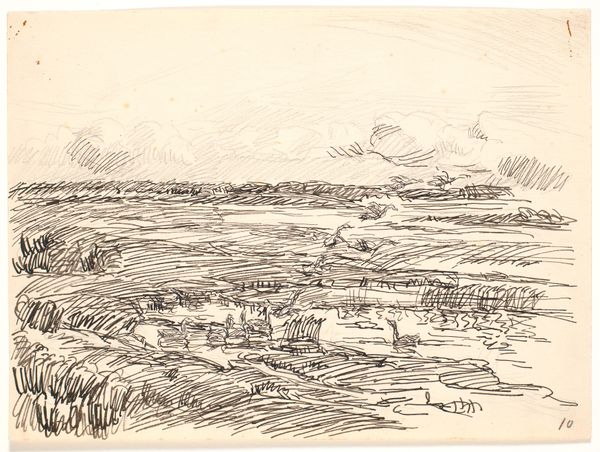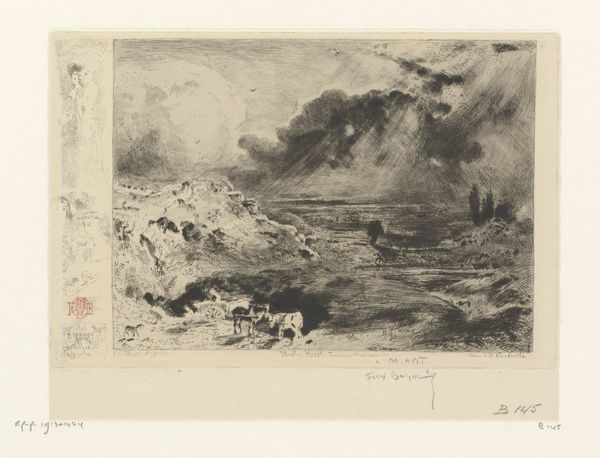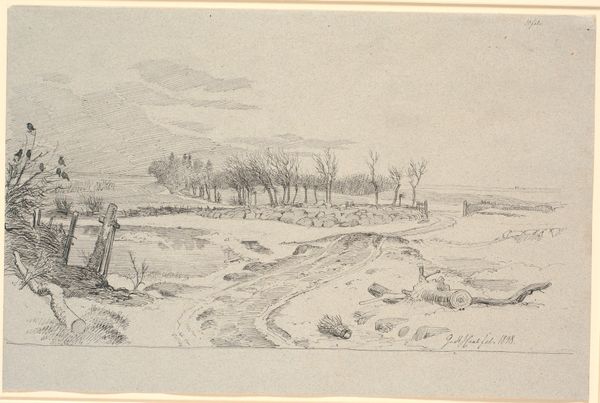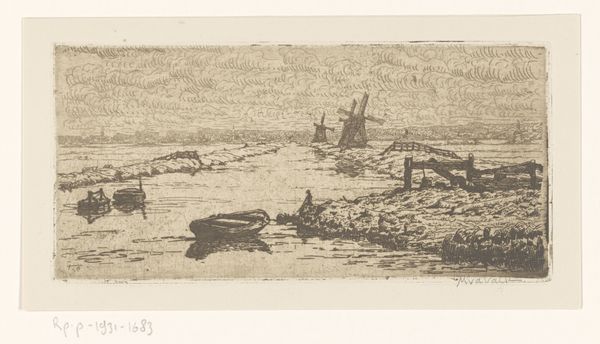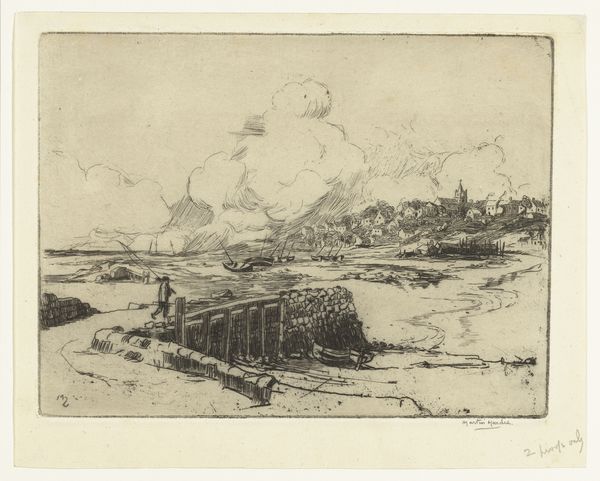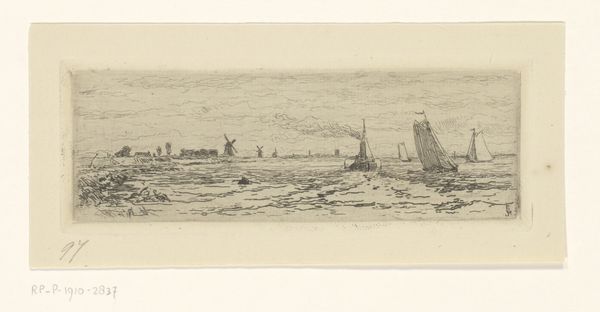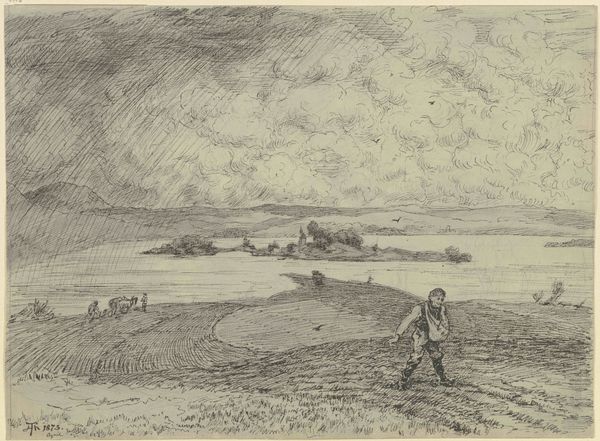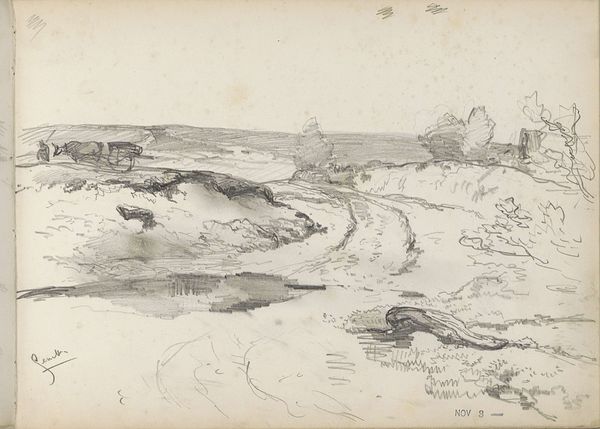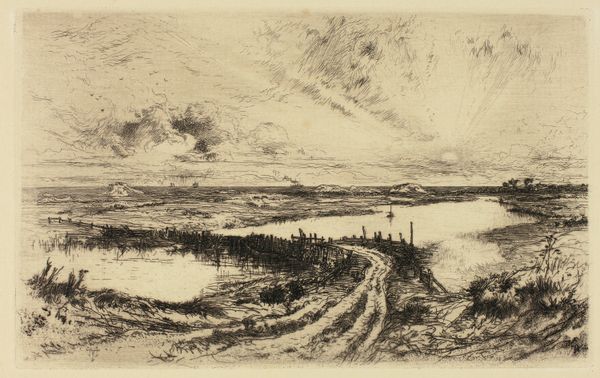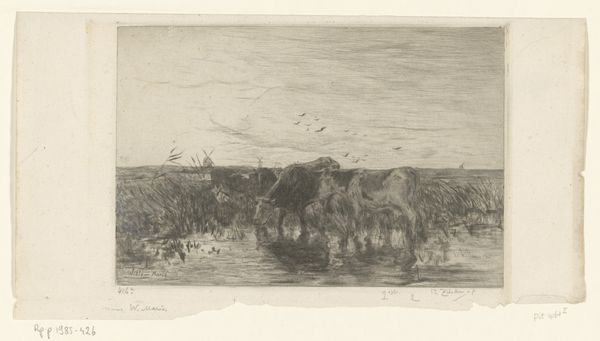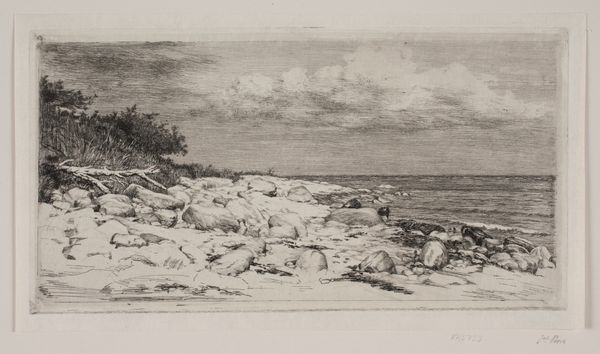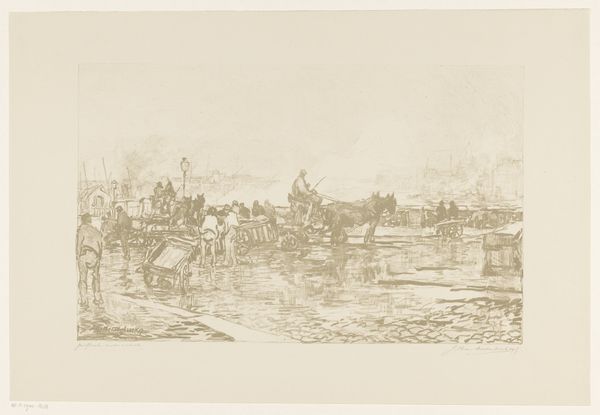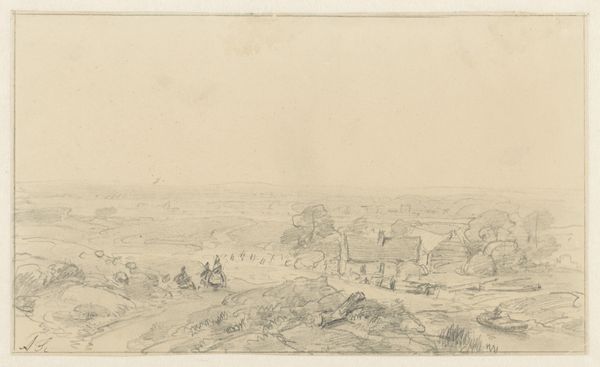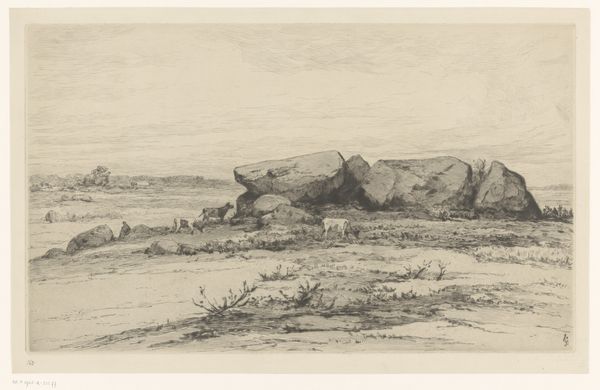
Dimensions: height 254 mm, width 364 mm
Copyright: Rijks Museum: Open Domain
Curator: Here we have "Bombardement van Suomenlinna (Sweaborg), 1855" by Jean Baptiste Henri Durand-Brager. It’s an etching depicting a naval bombardment. Editor: My first impression is chaos, honestly. A dense composition of smoke and fire upon water, rendered in stark black and white. It’s somehow both epic and claustrophobic. Curator: The piece captures the bombardment of the Suomenlinna fortress during the Crimean War. Notice the intricate detail despite the medium of etching. It would have been printed and widely distributed, serving a function almost like a contemporary news photograph. Editor: Right, the imagery is packed! Beyond the obvious warships and explosions, I see a deliberate contrast. The smoke, the clouds, even the reflection on the water seem to mirror each other, suggesting a cyclical nature to conflict, almost like a historical echo chamber. Curator: That’s fascinating. Looking at the work from a materialist perspective, I’m struck by the contrast between the delicate labor of the etching process and the violent subject matter it depicts. Mass production meets mass destruction, in a way. Editor: And think of what those repeated images would have meant. The white smoke becomes a symbol for aggression and suffering across borders. The piece almost anticipates future conflicts. Curator: Perhaps. The visual repetition speaks to me about industrial scale war. This isn't just a battle; it's the output of empires, expressed in terms of both metal and ink. The scale hints at broader manufacturing processes. Editor: Indeed. The way those plumes of smoke curl and writhe also calls to mind traditional depictions of hell or damnation. This lends it an added psychological weight. This wasn’t simply a naval action; it was an unleashing of societal demons. Curator: Absolutely, I was very drawn to the materiality here and what its production meant in the 19th century. The means by which knowledge and depictions were delivered were themselves changing war and its experience, a precursor to many aspects of modern warfare. Editor: Considering the imagery's lasting power across borders, I think Durand-Brager managed to tap into primal fears. It has left me pondering the cultural sediment of war. Thank you.
Comments
No comments
Be the first to comment and join the conversation on the ultimate creative platform.
